The Silva
- 29 units available
- Studio • 1 bed • 2 bed
- Amenities
In unit laundry, Patio / balcony, Hardwood floors, Dishwasher, Pet friendly, Garage + more

Washington, D.C. isn’t just monuments and motorcades. Moving here means stepping into a city where power suits meet go-go beats, and every block has a story (and probably a great food spot, too). Sure, the Capitol dome is postcard material—but the real D.C. lives in buzzing food halls, basement jazz clubs, and neighborhoods that feel like mini villages inside the city.
And the secret’s out. By 2045, the District is expected to add more than 300,000 new residents. Translation: if you’re moving to Washington, D.C., you’re joining a city on the rise—one that’s about way more than politics. Whether you’re chasing career growth, cultural flavor, or just a fresh start, here are 15 things you’ll want to know before you unpack that first box.
Rent in Washington, D.C. is high, with average prices around $2,645 for a one-bedroom and $3,914 for a two-bedroom. That means you’ll likely need to earn $89,000+ annually to live comfortably.
The job market stretches beyond politics—tech, healthcare, education, and international organizations make D.C. a strong career hub.
Neighborhoods come with distinct personalities: Adams Morgan is lively and eclectic, Dupont Circle is historic and walkable, and Georgetown mixes cobblestones with high-end living.
Owning a car isn’t necessary—Metro, buses, bikes, and ride-shares keep the city moving (though delays and traffic are part of the deal).
Population growth is projected at 30–47% by 2045, making D.C. a city on the rise and a magnet for new renters.
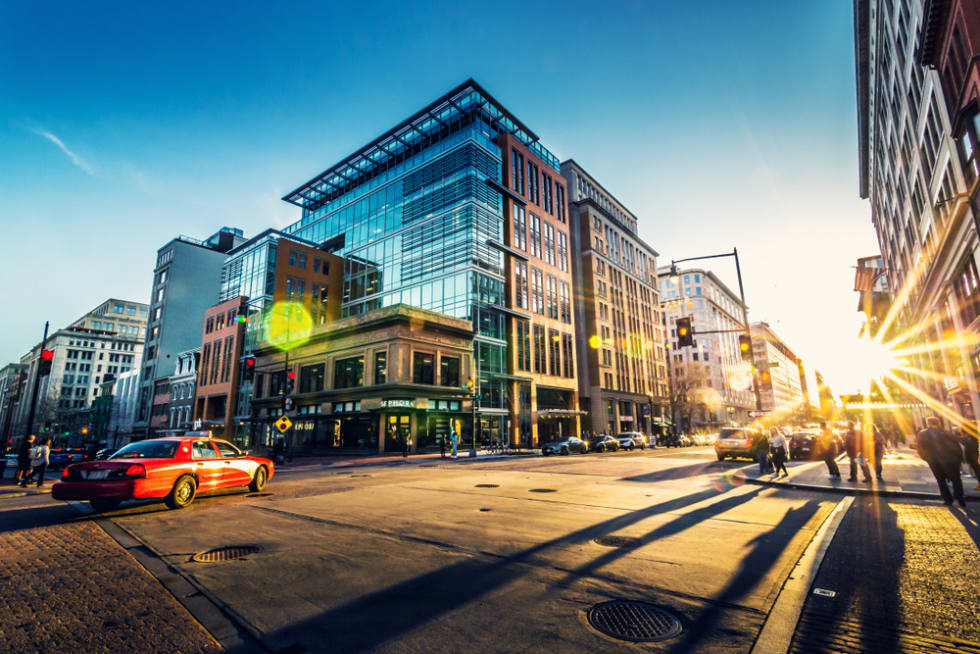
Living in Washington, D.C. means balancing a political hub with a thriving arts, food, and cultural scene. The city has just under 690,000 residents, 80+ museums and galleries (many of them free), and neighborhoods that range from historic rowhouses to modern high-rises.
Beyond politics, D.C. surprises newcomers with world-class art, global dining, and quick escapes to nature—think Chesapeake Bay weekends or Shenandoah hikes. Each neighborhood has its own identity, from Dupont Circle’s energy to Georgetown’s charm.
It’s not just another U.S. city—it’s a federal district, which means rules and representation work a little differently. For renters, that means living in D.C. is exciting, sometimes overwhelming, but always full of possibilities.
Washington, D.C. is one of the most expensive cities in the U.S., with median rent currently at $2,213 and overall living costs averaging over $5,700 per month.
That said, salaries often keep pace with expenses, especially in government, law, and consulting. Many renters reduce costs by living just outside the District—in Arlington, Alexandria, or Silver Spring—where housing is more affordable and the D.C. Metro keeps downtown close.
Budgeting is essential here, but with a clear plan, you can live comfortably in D.C. without sacrificing what makes the city exciting.
Yes, but you don’t need to be a senator—or even know one—to land a job in D.C. While politics is the headline act, the city’s economy is a lot more layered than that. Think global organizations (World Bank, IMF), 176 embassies, nonprofits, think tanks, and advocacy groups. If you’re into policy, mission-driven work, or lobbying, you’ll find your corner.
But here’s the twist: D.C. is also becoming a legit tech hub. Startups and big names alike are setting up shop here, adding a fresh career pipeline to a city long defined by government gigs. Throw in healthcare, education, and consulting, and you’ve got options. Moving to Washington, D.C. isn’t just about politics—it’s about possibilities.
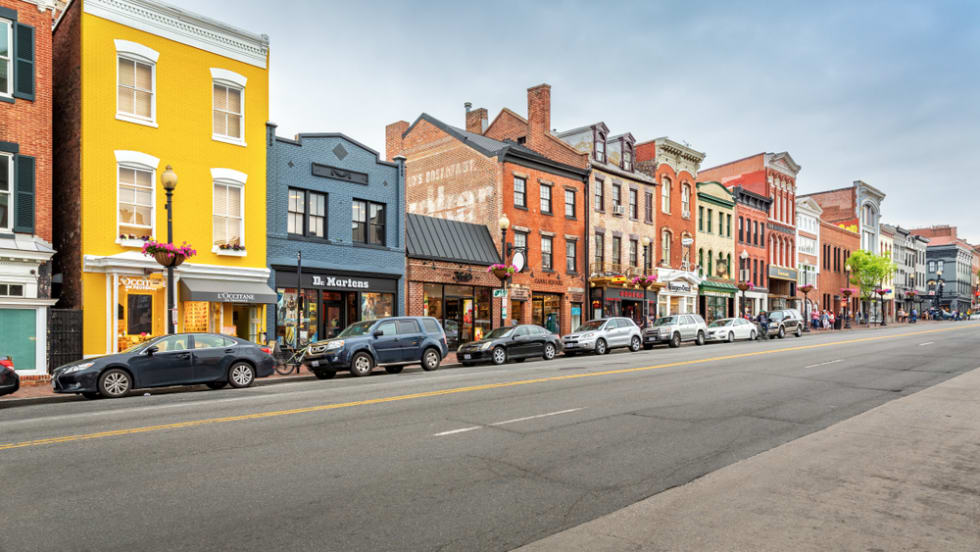
Some of the best neighborhoods in Washington, D.C. include Adams Morgan, Dupont Circle, and Georgetown, each offering its own unique character and perks.
Beyond those headliners, Navy Yard is sleek and modern, Capitol Hill delivers historic rowhomes with neighborhood warmth, and Petworth offers more space without leaving city life behind. If affordability is key, nearby suburbs like Arlington and Silver Spring stretch your budget further while keeping you Metro-close.
The “best” neighborhood really depends on what you want—nightlife, history, affordability, or green space—but no matter your priorities, moving to D.C. means you’ll find a neighborhood that feels like home.
Adams Morgan is colorful, eclectic, and full of energy. By day, you’ll find global restaurants and quirky shops; by night, the area lights up with bars, live music, and late-night eats. It’s a hotspot for young professionals who want a social scene without giving up neighborhood charm.
The area also offers nearby green space at Rock Creek Park, making it easy to balance nightlife with nature. If you’re moving to Washington, D.C. and want both convenience and character, Adams Morgan is a strong contender.
Dupont Circle blends history with modern city living. Elegant rowhouses and post-Civil War architecture frame streets filled with restaurants, coffee shops, and one of the city’s best farmers markets. The namesake traffic circle itself doubles as a hangout spot for locals reading, relaxing, or playing chess.
This neighborhood is also a hub for arts and international culture, with embassies, galleries, and theaters nearby. If moving to Washington, D.C. means you’re craving walkability, history, and plenty of things to do, Dupont Circle checks every box.
Georgetown is one of D.C.’s most iconic neighborhoods, with cobblestone streets, boutique shopping, and a waterfront lined with cafes. It’s home to Georgetown University, which adds youthful energy to an otherwise historic district filled with 19th-century mansions.
Living here comes with a higher price tag, but for many renters, the charm outweighs the cost. If you’re moving to Washington, D.C. and want a neighborhood that feels both classic and lively, Georgetown delivers.
Washington, D.C. weather means hot, humid summers, mild but sometimes snowy winters, and beautiful spring and fall seasons.
Cherry blossom season in March and April transforms the city into a postcard-worthy destination, while autumn brings crisp days perfect for walks along The Mall. Summers are sticky but made bearable by rooftop pools, and winters bring more slush than blizzards.
In short: pack both snow boots and sandals—you’ll use them.
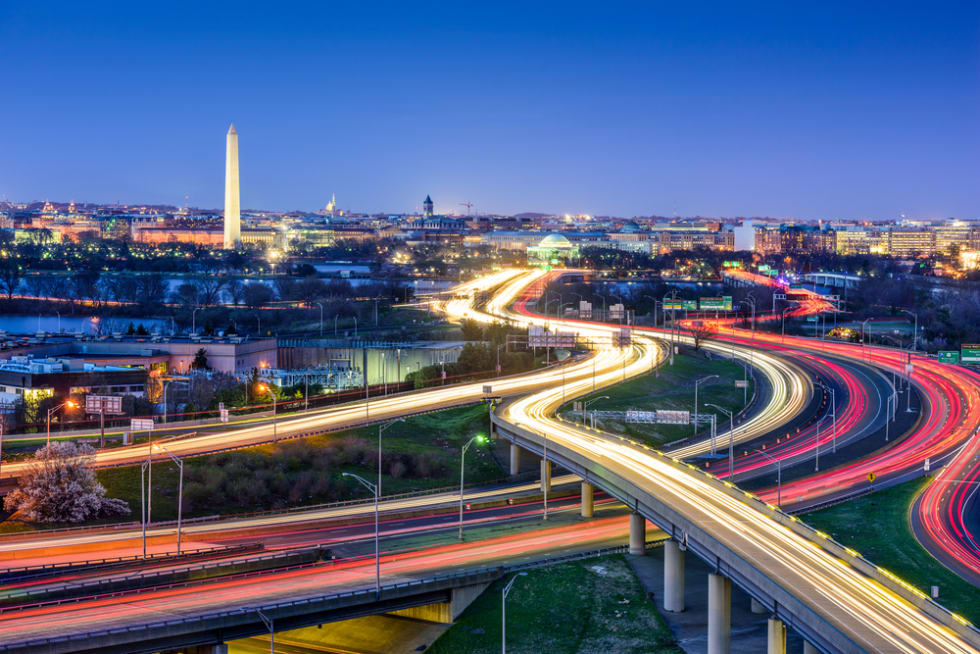
Yes—Washington, D.C. has a reliable public transportation system anchored by the Metro, which connects the city to Maryland and Virginia.
Many renters get by without a car, thanks to buses, scooters, rideshares, and walkable neighborhoods. Monthly passes make commuting affordable and predictable.
The caveat? Metro delays are a running joke, and driving can be chaotic with traffic circles, scarce parking, and brutal rush hours. Living near a Metro stop is the ultimate renter hack—it makes city life smoother and less stressful.
Washington, D.C. is known for its half-smoke sausage (best enjoyed at Ben’s Chili Bowl), but its food scene stretches far beyond that.
The city is packed with global flavors—from Michelin-starred restaurants to Ethiopian cuisine in Adams Morgan, plus trendy food halls like Union Market and The Wharf.
And don’t forget brunch—D.C. locals treat it like a sport, with bottomless mimosas and oversized plates filling weekends across the city.
Washington, D.C. is generally safe, but crime rates vary by neighborhood, and like any major city, awareness matters.
Many renters feel comfortable in areas like Dupont Circle, Capitol Hill, and Tenleytown, while nightlife-heavy neighborhoods may have more activity after hours. Public transit is widely used, but late-night travel requires extra caution.
Safety in D.C. comes down to choosing the right neighborhood for your comfort level and staying aware of your surroundings.
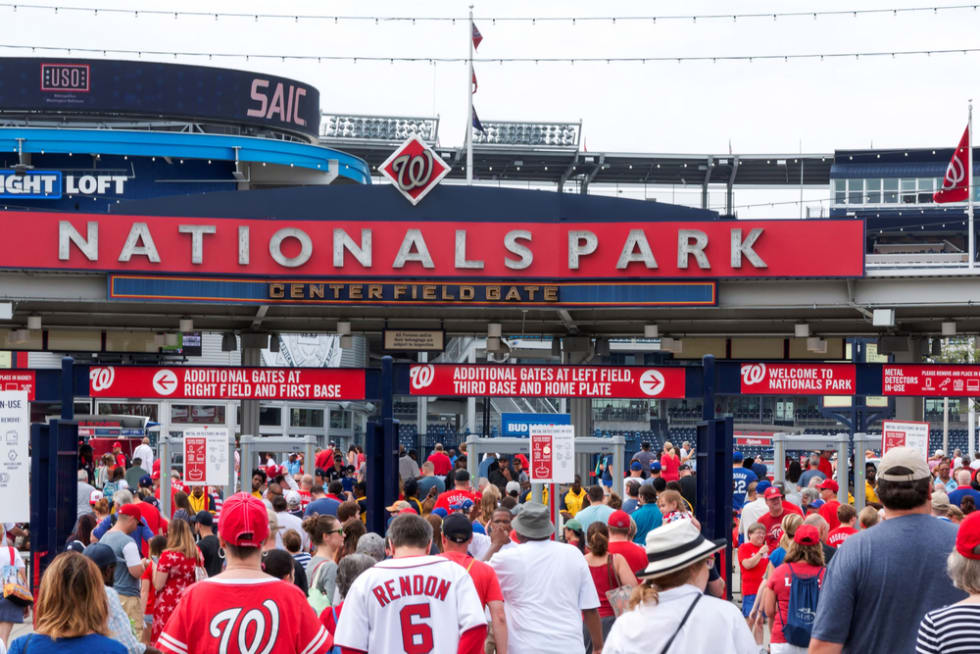
There’s always something to do in Washington, D.C.—from free museums to live music, pro sports, and seasonal festivals.
Renters can catch shows at the 9:30 Club, see Broadway-caliber performances at The National Theatre, or enjoy free concerts at The Kennedy Center. Sports fans can cheer on the Nationals, Wizards, Capitals, and D.C. United.
The National Cherry Blossom Festival is the city’s showstopper, drawing crowds every spring, but year-round you’ll find food festivals, neighborhood markets, and endless cultural events. In short: your weekends will never be empty.
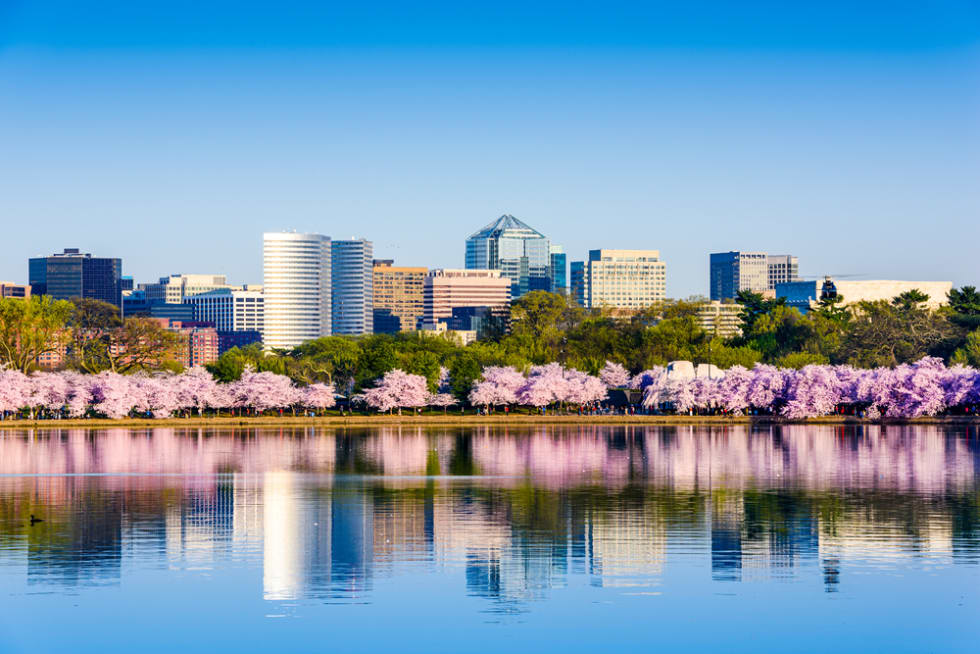
According to our Renter Migration Report, Washington, D.C. attracts young professionals, international workers, students, and people from nearby cities like Baltimore, New York, and Boston.
The city’s strong job market and universities draw a constant influx of newcomers, but it also means D.C. can feel transient, with people cycling in and out around government contracts, elections, or academic programs.
For renters, that makes D.C. an exciting place to meet new people and build connections—if you’re open to constant change.
Washington, D.C. has a base sales tax of 6%, which is lower than New York or Chicago. But other rates kick in depending on what you’re buying—10% for alcohol, 14.5% for hotels, and 18% for parking lots. Moving to Washington, D.C. means paying attention to your receipts, because those small percentages add up.
The upside is that income tax brackets here are progressive, and many residents find the system straightforward once they get the hang of it. Keeping an eye on your budget before you move will help you avoid surprises. And hey, at least groceries aren’t taxed—so your farmer’s market finds are safe.
No, Washington, D.C. is not a state—it’s a federal district. That means residents don’t have the same representation in Congress as people living in the 50 states. D.C. has a delegate in the House of Representatives, but no voting senators. Congress also holds oversight over many local matters, which can feel frustrating for residents who pay federal taxes but don’t get full federal representation.
This is where those license plates that read “No taxation without representation” come in—they’re not just decorative. They’re political commentary, highlighting a fight that’s been ongoing for decades. Statehood has been debated for years, and in 2016, D.C. 86% of residents overwhelmingly affirmed their desire to become a state.
For newcomers, this can feel complicated (and maybe even confusing at first). But it’s also one of the things that makes life in D.C. unique. Living here means being surrounded by not just national politics but also local debates about democracy, fairness, and representation.
In Washington, D.C., “the DMV” means the District, Maryland, and Virginia—not the place where you get your license. Locals use “DMV” as shorthand for the broader metro area that shares jobs, culture, and traffic. If you live inside I-495, you’re “inside the Beltway.” That shorthand will make sense fast once you’re here.
Moving to Washington, D.C. often means thinking beyond city limits. Arlington, Alexandria, and Bethesda are all part of daily life for commuters, shoppers, and weekend adventurers. Living in the DMV area is about flexibility—one day you’re at a wine bar in Virginia, the next you’re exploring a Maryland hiking trail, and you still make it back to D.C. in time for dinner.

Absolutely. As the nation's capital, locals take the history of DC seriously. It’s impossible not to when there are historic landmarks and government buildings around every corner.
Many residents live within walking distance of landmarks like the Capitol, White House, or Lincoln Memorial, and museums like the Smithsonian system (all free) are part of everyday life.
Popular stops include:
Art and history overlap here, too, with institutions like the National Gallery of Art, the National Portrait Gallery, and the Smithsonian American Art Museum. In D.C., history isn’t just something to visit—it’s part of daily life.
Washington, D.C. is home to major universities including Georgetown, George Washington, American, Howard, and Catholic University.
These schools bring a steady flow of students, which keeps the city youthful and lively. Sports fans flock to Georgetown basketball games, and renters benefit from the energy, nightlife, and late-night eats that come with a strong student presence.
For renters, living near these campuses means being part of a city that always feels like it’s evolving.
Ready to settle into a city known for history, architecture, museums, and food? Finding the right apartment in D.C. doesn’t have to be a headache. With Apartment List, you’ll skip the endless scrolling and get matched with places that actually fit your life.
Take our quick quiz to explore apartments in Washington, D.C.—or dive into our neighborhood guide if you’re still narrowing down your options. With us, you’ll spend 5 minutes and save 50 hours searching.
If you value career growth, cultural variety, and city living with quick access to nature, Washington, D.C. has a lot to offer. But renters should be realistic about the costs, the commute, and the city’s ever-changing population.
To live comfortably in Washington, D.C., aim for an annual income of at least $89,840. That’ll cover average monthly expenses of about $5,700 and still leave some wiggle room for savings. With median rent for a two-bedroom sitting at $2,246, you’ll want to bring in around $7,487 a month before taxes. Pro tip: keep housing costs under 30% of your income—your future self will thank you.
Budget, career opportunities, lifestyle, and long-term goals. D.C. is rewarding for renters who want culture, career growth, and energy, but you’ll need a clear plan for costs.
Washington, D.C. runs on Eastern Time (ET), the same as cities like New York, Boston, and Atlanta. That means you’re always in sync with the financial markets, federal government schedules, and most East Coast events. Keep in mind that the city observes Daylight Saving Time, so clocks spring forward in March and fall back in November.
Here’s a trick question: Washington, D.C. isn’t in a county at all. The District of Columbia is its own federal district, completely separate from Maryland and Virginia. So if someone asks what county you live in after moving to Washington, D.C., the answer is simply “none.”
There are plenty. Career opportunities are abundant, not just in politics but in tech, healthcare, education, and international relations. Culture is everywhere—from free museums and monuments to global food scenes and live music. The city is also walkable and well-connected, meaning you can live comfortably without owning a car. Moving to DC also puts you within easy reach of beaches, mountains, and historic towns, making weekend getaways a breeze.



In unit laundry, Patio / balcony, Hardwood floors, Dishwasher, Pet friendly, Garage + more
In unit laundry, Patio / balcony, Dishwasher, Pet friendly, New construction, Garage + more